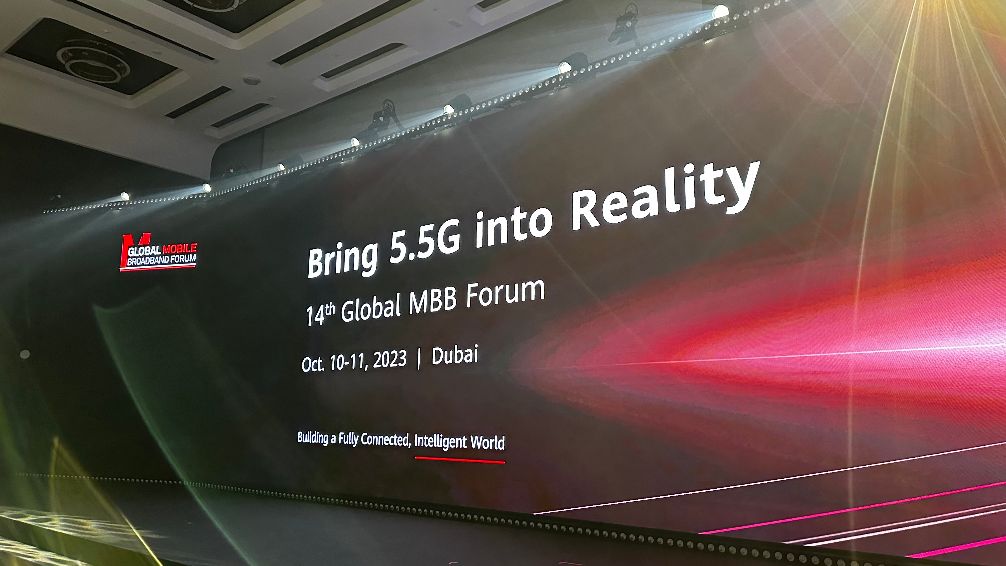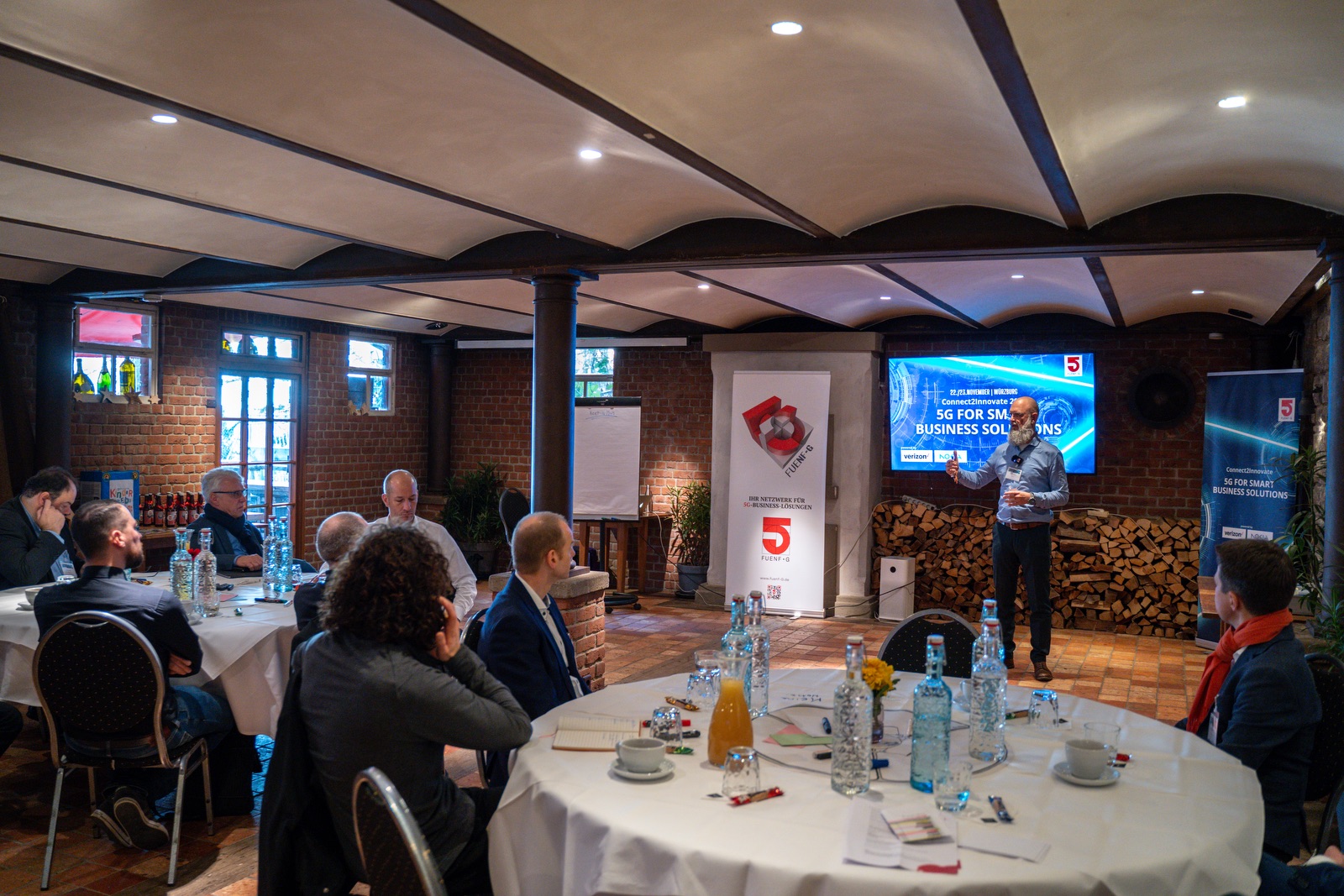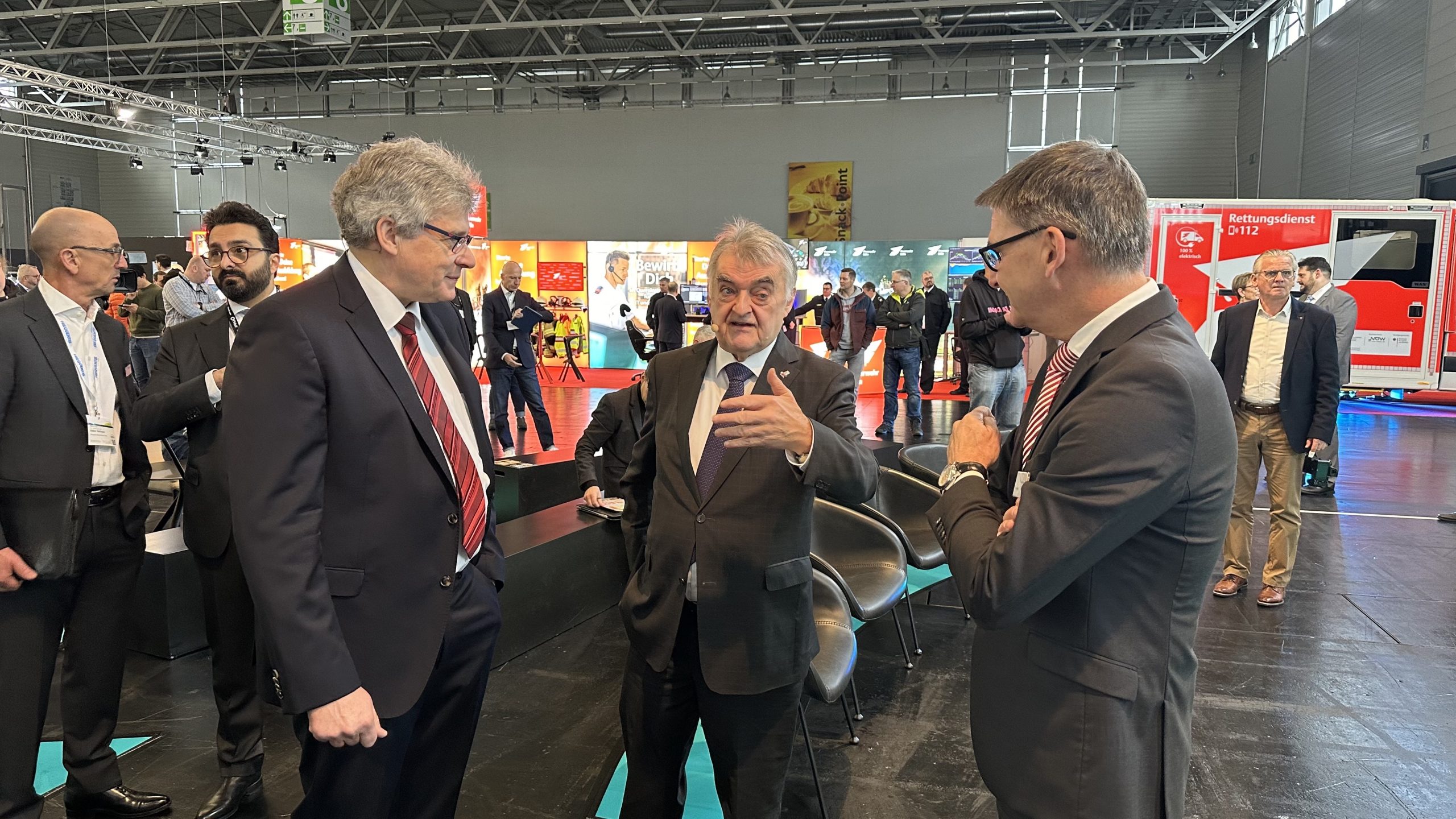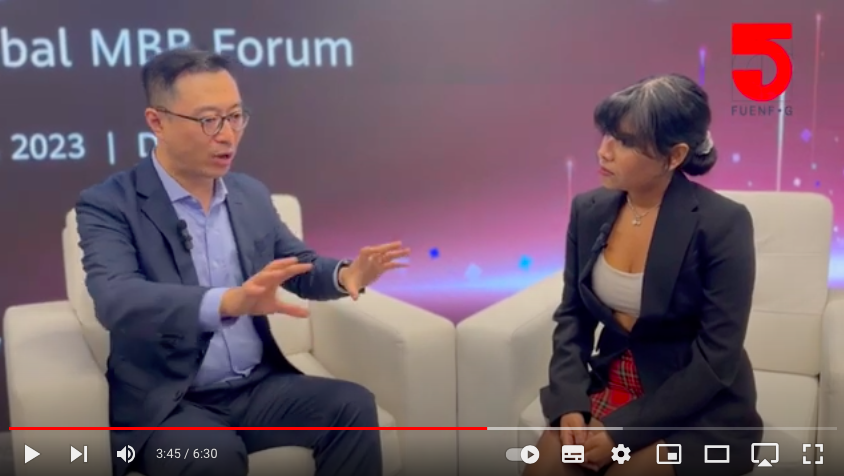With ever more vertical industries collaborating, and 5G and 5.5G entering their fourth year since their inception, wireless broadband has come a long way since the first mobile call, fifty years ago. Read more about the highlights of the 14th global MBB forum from Dubai, on all things 5G and advanced 5G.
Today marked the first day of the 14th global mobile broadband forum and your FUENF-G team reports live from the on-site location at Jafza One Convention Centre, Dubai, UAE. Featuring a series of keynote speakers representing an international gathering of ICT leaders and representatives. Here are some key highlights from the inauguration keynote speeches, with which MBBF convened.
5.5G for a sustainable wireless ecosystem
Huawei’s executive editor-in-chief and host of the keynote speeches, Gavin Allen, moderated the talks. In attendance were operators, industry partners, regulators, analysts, and special interest journalists from the world of wireless communications. The main premises of the talks were establishing a sustainable mobile ecosystem to plan for the advent of 5.5G industry.
Ken Hu, rotating chairman at Huawei, and Mats Granryd, director-general of GSMA joined in on a live virtual meeting. Hu shared the anecdotal evolution of 5G, 14 years since the first 5G discussion and how it has, since, moved the industry forward. He stated that in the past four years, there have been approximately 260 5G networks established, covering over 1.5 billion of the world’s population. With 5.5 billion 5G users and positive consumer feedback, the industry is now aiming to provide heightened access to B2B services.
Many operators have initiated collaborations with vertical industries, focusing on key scenarios like machine inclusion, data mining, cloud computing, and much more. The recent industry developments have led to the commercial upscaling of the 5G industry. This in turn has made the transition from trial to commercial scalability much smoother, with a better understanding of industry needs and the introduction of virtual broadband and product exemplars. The expectation is that 5G will change the world in the next five years, with consumers demanding better user experiences, maximizing investment value, promoting better network coverage, and requiring more applications, including cloud-based forums and enhanced VR or AR.
Open gateway can help 5G businesses
Hu stressed, that the regulation of application development and the ecosystem is crucial for more innovative speed-enhancing techniques. Scalability and capability are key for businesses, and the focus should be on key industries and SMEs. He further added gleamingly “an open gateway can help 5G businesses to go beyond, by integrating cloud capability, and revamped AI models.” Hu also mentioned that with the onset of ChatGPT, and smart cars, all of which depend on 5G, the industry needs to get ready for the advanced technologies of 5G and 5.5G, which are already being adopted by several operators worldwide.
Bitte akzeptieren Sie YouTube-Cookies, um dieses Video abzuspielen. Durch die Annahme greifen Sie auf Inhalte von YouTube zu, einem von einem externen Dritten bereitgestellten Dienst.
YouTube-Datenschutzrichtlinie
Wenn Sie diese Benachrichtigung akzeptieren, wird Ihre Auswahl gespeichert und die Seite wird aktualisiert.
Non-ICT industries key players in 5.5 G
Also live was Mats Granryd, Director General of GSMA. His talk focused on current issues, opportunities, and challenges as the industry transitions from 5G to 5.5G, agreeing, therefore, with Ken Hu’s assessments. He highlighted that it took twelve years for 3G to gain momentum, in comparison 5G has found large-scale acceptance in the B2B and B2C realm rather swiftly. Which, he stated, is encouraging for mobile operating companies. GSMA research claims, that by 2030, there are expected to be 5.2 billion subscribers, with a stronger focus on B2B use cases, as demonstrated by events like MWC (Mobile World Congress) in Barcelona organized by GSMA, where 50% of participants come from outside the ICT sector, including automotive and aeronautics.
The GSMA prognosis indicates better-run operations in the future, offering new solutions and capabilities that will add trillions of US dollars to the global economy through mobile industry development and scalability technologies Also projected by 2028, is a tripling of data consumption, further contributing to the global economy. To this, Ken Hu filled in the blanks by stating, that this expected phenomenon will lead to greater investments, as seen with companies like Spotify, Uber, and Airbnb when adapting to the transformative power of 5G.
Hu also briefly touched upon the “Open Gateway Initiative”, involving hyperscalers and developers creating common APIs to be shared among providers, which of late has seen significant engagement, with around 220 mobile operators signing up. Deutsche Telekom, for instance, has already launched three commercial APIs, marking a significant step forward.
Challenges of 5.5G deployment
“However, there are challenges”, sighed Granyrd. He continued, “including the need for 1.5 trillion USD in spending on 5G, the development of new business models for profitability and sustainability, and the call for companies using substantial bandwidth to provide financial aid or reduce bandwidth consumption in Europe to ensure a fair and ecological share.” Granyrd proudly claimed, that the mobile network industry is the first to address all 17 UNDP goals, highlighting 5.5G’s drive and need for a sustainable agenda.
5G fixed wireless access markets go global
“5G is driving digital transformation”, said the next keynote speaker Alex Sinclair, CTO of GSMA, describing it as the biggest tech revolution in terms of connectivity and computing. There are currently 5.4 billion unique mobile subscribers, and AI has seen cross-sectoral growth, reaching 1.5 billion users within 4 years of its launch. The wireless tech sector is experiencing its most substantial growth ever, with 5G FWA (Fixed Wireless Access) markets spreading across various areas. This digital transformation is expected to add 1.5 trillion USD to the global economy in GDP annually.
Large scale campus networks and use-cases
Some of the most significant applications of 5G have been in large campuses, with China’s first medical application featuring 3D scanning robots, safety monitoring, image recognition for potential hazards, and real-time statistics and HD in sports. With advanced 5G offering a dynamic spectrum sharing offers up to 1 cm location accuracy, and 5G is becoming a reliable replacement for cable networks, enhancing its value to operators and industries. The GSMA Open Gateway has been launched to provide common network APIs, with over 35 million signatories, enabling more than 60% of mobile connections. Further APIs are expected to strengthen future investment.
5.5G in the UAE exemplary for all
Eng. Saif bin Ghelatia, director of technology development affairs at the UAE TRA, discussed the need for higher speeds, lower latency, and higher capacity, particularly for IoT, VR, and AI. According to him, fixed wireless access represents the next phase of 5.5G construction and deployment, with the UAE leading in the deployment of 5G, where more than 93% of the population utilizes it. He quoted from the Tetra white paper, which highlights industry applications, and the success of phase two 5G advanced trials in the UAE, which has resulted in a tenfold increase in 5G speed. Also heard from the 5G grapevine, is the upcoming World Radio Communications Forum in Dubai in November 2023. This event shall play a crucial role in the UAE’s vision to promote the maturity of industry products and work towards 5G adoption.
5G market growing substantially
Next up on the podium was Karim Benkirane from Du (Emirates integrated telecommunications company). He emphasized the need for 8K HD and better experiences, as high-speed broadband and the evolution of 5G are imperative. The growth of 5G subscribers is significant, with 300 million FWA connections, accounting for 17% of all fixed broadband connections. The migration from 4G to 5G in businesses is ongoing, with more than 50% of total traffic coming from 5G.
The fixed market is expected to grow by 19%, but challenges include matching indoor coverage to outside coverage for consumers (B2C) and for key-industries (B2B), meeting consumer expectations, and regulating traffic securely. The need to segregate different types of traffic, achieve 300-500 Mbps, offer differentiated service level agreements, diversified speed, symmetric traffic, lower costs, remote speed monitoring, and AI-based potential user identification are all essential for the growth of the SME market in the UAE. He also concluded, that 5G business monetization represents a significant opportunity for industry growth and development in the coming years.
Our editorial team shall be offering a detailed reporting of the global MBB forum and the upcoming UBB forum. For making sure, that you do not miss any updates, subscribe to our newsletter for all things 5G. Also find us on social media.
Transparency note: It is important to the FUENF-G team to work journalistically independently. This also includes acting transparently. It sometimes happens that individual companies invite members of the editorial team on press trips in order to gain insights into global structures or productions or to participate in international conferences. Even if hotel and travel costs are sometimes paid by the inviting company, the independence of the reporting is not affected. FUENF-G contributions are neither controlled nor filtered.









Leave A Comment